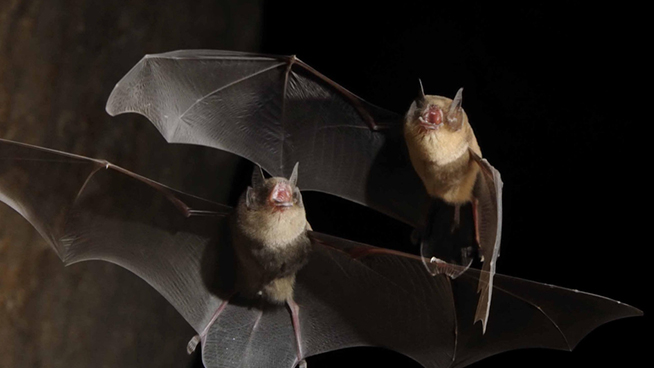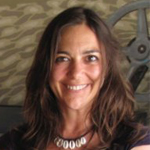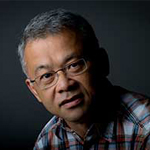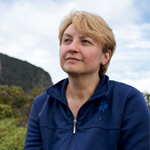ROM Research Colloquium: BLOG-A THON (Day 3)

Five researchers, five questions, five days.
Join us for the ROM Research Colloquium on February 23 and meet our researchers! Stay for the Vaughan Lecture given by Dave Rudkin.
How does your research help us understand the world?
 Silvia Forni: My research is about things and people. I explore how and why people make things and how people relate to the objects in their world. Objects can separate people from one another, be used as a marker of status and distinction, or can connect people, creating or reinforcing ties. The meaning attributed to objects may vary greatly across time and cultural contexts, but everywhere people shape their material world and are at the same time shaped by it. Unpacking these dynamics helps us understand differences and commonalities across cultures. It also suggests the possibility of different logics and forms of appreciation.
Silvia Forni: My research is about things and people. I explore how and why people make things and how people relate to the objects in their world. Objects can separate people from one another, be used as a marker of status and distinction, or can connect people, creating or reinforcing ties. The meaning attributed to objects may vary greatly across time and cultural contexts, but everywhere people shape their material world and are at the same time shaped by it. Unpacking these dynamics helps us understand differences and commonalities across cultures. It also suggests the possibility of different logics and forms of appreciation.
 Justin Jennings: Archaeology opens up a window to past worlds that are often seen as quite distinct to the one we live in today. The details of earlier cultures can seem like useless trivia—the Incas valued color over purity in their metal—but they can destabilize the unquestioned assumptions that guide our lives. Why are we so fixated on purity and categorical separations? My particular work is engaged with understanding the spread of what we often call “civilization” and how this is similar, and often quite different, that the contemporary phenomena of globalization.
Justin Jennings: Archaeology opens up a window to past worlds that are often seen as quite distinct to the one we live in today. The details of earlier cultures can seem like useless trivia—the Incas valued color over purity in their metal—but they can destabilize the unquestioned assumptions that guide our lives. Why are we so fixated on purity and categorical separations? My particular work is engaged with understanding the spread of what we often call “civilization” and how this is similar, and often quite different, that the contemporary phenomena of globalization.
 Burton Lim: My research on the evolution of mammals has helped in discovering an underestimation of biodiversity by at least as much as 25%. Mammals are some of the better known and studied groups of animals, but surprisingly we don’t know something as basic as how many species there are. Fieldwork I’ve been doing recently in the Caribbean will contribute to our understanding of species diversity and the best ways of allocating conservation resources and efforts into preserving one of the most threatened ecosystems in the world.
Burton Lim: My research on the evolution of mammals has helped in discovering an underestimation of biodiversity by at least as much as 25%. Mammals are some of the better known and studied groups of animals, but surprisingly we don’t know something as basic as how many species there are. Fieldwork I’ve been doing recently in the Caribbean will contribute to our understanding of species diversity and the best ways of allocating conservation resources and efforts into preserving one of the most threatened ecosystems in the world.
 Simona Margaritescu: Our findings help us understand the global patterns of fungal diversity and will integrate fungi into a general macroecological framework Fungi are important players in all ecosystems; they are the major decomposers and indispensable associates of many organisms; however their life histories are complicated and not well documented. Despite the ubiquity of ectomycorrhizal associations, biogeographic and evolutionary studies are still scarce. Our comparison analyses on the ectomycorrhizal fungi collected in temperate and tropical areas add further evidence to the global patterns of biodiversity.
Simona Margaritescu: Our findings help us understand the global patterns of fungal diversity and will integrate fungi into a general macroecological framework Fungi are important players in all ecosystems; they are the major decomposers and indispensable associates of many organisms; however their life histories are complicated and not well documented. Despite the ubiquity of ectomycorrhizal associations, biogeographic and evolutionary studies are still scarce. Our comparison analyses on the ectomycorrhizal fungi collected in temperate and tropical areas add further evidence to the global patterns of biodiversity.
 David Rudkin: My research involves finding very tiny pieces of the enormous puzzle that is the history of life on planet Earth, and plugging them into the appropriate gap. Each individual fragment we add represents an incremental step towards understanding how the modern biosphere - in which our own species plays an increasingly significant role - has come to be. I’m particularly interested in the patterns that have arisen through the processes of evolution, the timing of critical biological events and ecological shifts in the complex story, and how these might inform our ability to manage our presence in the world.
David Rudkin: My research involves finding very tiny pieces of the enormous puzzle that is the history of life on planet Earth, and plugging them into the appropriate gap. Each individual fragment we add represents an incremental step towards understanding how the modern biosphere - in which our own species plays an increasingly significant role - has come to be. I’m particularly interested in the patterns that have arisen through the processes of evolution, the timing of critical biological events and ecological shifts in the complex story, and how these might inform our ability to manage our presence in the world.
